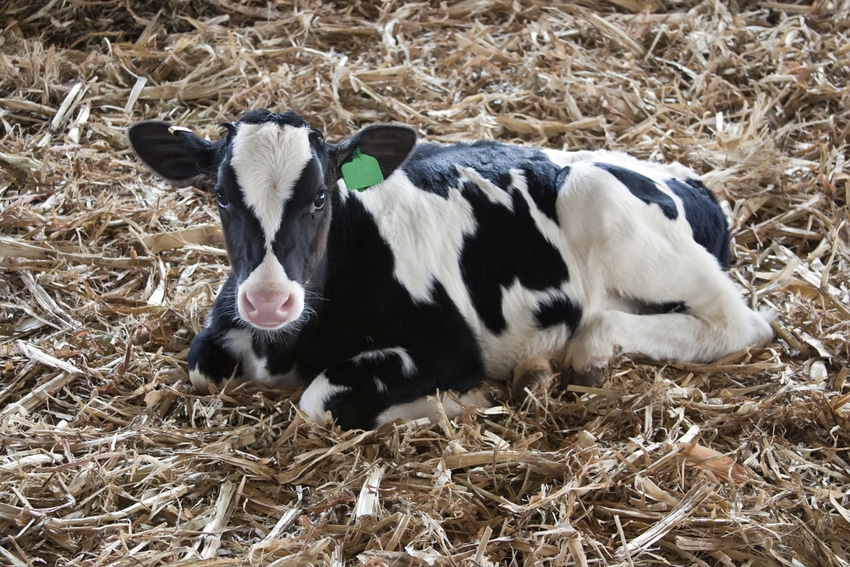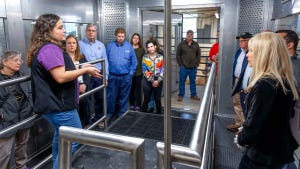Early microbiota of newborn calves more closely resembles oral microbiota of adult cows.
September 6, 2018

Researchers at the University of Helsinki in Finland have found bacterial DNA in the intestines of newborn calves, representing quite a diverse variety of bacterial species. Previously, the researchers said it was thought that the fetus develops in sterile conditions inside the uterus, thus delaying microbial colonization until after birth.
"Calves are an excellent study subject due to their conveniently large size already at birth. We are able to collect microbial samples directly from the rectum of newborn calves with sterile equipment doubly protected against contamination, making interference by microbes from the outside world impossible. In the case of human babies, researchers have to wait for them to defecate, which makes it very likely that bacteria already on the skin of the baby will contaminate the samples," explained Mikael Niku, a docent in the Faculty of Veterinary Medicine at the University of Helsinki.
The early microbiota of newborn calves more closely resembles the oral microbiota of adult cows rather than fecal microbiota, the researchers said.
"Similar results have been obtained also with human babies. However, a fetal microbiota does not necessarily originate specifically in the mouth but perhaps elsewhere at the beginning of the digestive tract, such as the rumen or the small intestine. Those are difficult areas from which to collect samples in living animals," Niku said.
In ruminants, the small intestine is of particular importance to the functionality of the immune system, since B cells — which produce antibodies — mature in the intestinal wall, whereas in humans, this process takes place in the bone marrow.
The research group led by professor Antti Iivanainen at the Helsinki Faculty of Veterinary Medicine found that in cattle, the intestinal immune system is already activated before birth.
After birth, the number of intestinal bacteria in calves quickly increases. Bacteria numbers were great already after the first day, but most of them were from the Escherichia genus. Within the first week after birth, the intestinal microbiota diversified and gradually started to gain the characteristics of adult fecal microbiota, the researchers noted. However, the microbiota of young calves clearly indicated their primary source of nutrition: milk.
Modern DNA analysis comprehensively illustrates the composition of the microbiota. However, the presence of living bacteria in samples remains uncertain, since DNA also can be preserved for some time after microbes die. The research group is currently employing traditional bacterial culture to find out whether there are living microbes in the fetus.
"It would actually be enough for the maturation of the immune system for the dam to, as it were, provide readily processed microbial fragments to the fetus," Niku suggested.
The group is studying the early microbiota of other domesticated animals also, since the goal is to understand the phenomenon in mammals overall. Another objective is to find out whether the feed offered to dams can affect the microbiota of newborns while also examining the development of the immune system.
"We mammals need species-specific intestinal microbiota originating in the dam or mother, as well as later on in life in other members of the same species. Our development takes place through interaction with these microscopic partners, enabling our immune system to identify friends and fight off harmful intruders. Determining the specifics of this dialogue is exceedingly interesting," Niku said.
The researchers were helped in the collection of rectal samples by the cowshed staff at the Viikki Research Farm, University of Helsinki, and a group of veterinary students monitoring the calving night and day.
"When calving was imminent, the students hurried to the cow shed to collect samples at the moment when the calf came out of the uterus. This is a fine example of how even students in the early stages of studies can take part in research," Niku said.
You May Also Like

.png?width=300&auto=webp&quality=80&disable=upscale)

